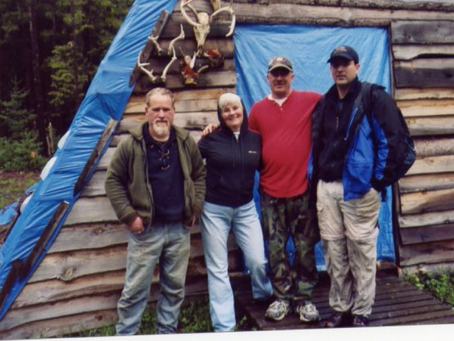
Stories of our people in the countryside.
1844-Present Day
Mohawk Valley,
Adirondack Mountains
New York
Mohawk Valley
The poor Irish immigrant farmers who arrived in the rich Mohawk Valley during the 1840’s had no chance to buy fertile farm land. They worked as laborers on farms or the canal or in factories until they had enough saved to buy a poor patch of earth up the mountain a bit. The native hardwoods had been stripped away by the earlier English occupants, leaving the thin soil to be washed downhill to enrich the farmlands along the Mohawk.
By the turn of the twentieth century, most of the O’Haras and their neighbors along Mexico Road (Murphy, Murry, Welch, and others) had raised a large family and used up every nutrient in the soil they owned. They moved on to the next township and bought better land, or went into the cities to find work. It seems that they walked away with what they could carry, and the woods did what woods will do, left to themselves. By the 1920’s, people who were born along The Mexico Road in the Southern Adirondacks could not find anything but foundations of those early cabins. Second growth forest turned their neighborhood into a wilderness, once more.
The City of Little Falls, in its heyday during the first few decades of the Twentieth Century, was the cheese capital of the world. It was bustling! Leather and Paper industries provided jobs, and the City was culturally rich, with entertainment houses and restaurants and a plethora of churches. President Lincoln’s Funeral Train went slowly through the City as residents lined up to pay their respects. Today’s residents are certain that their glory days are still ahead.
For me, as a child, it was a place I rarely visited, but imagined that, if I lived there, I would be happy. I thought it was magically wealthy and healthy and peaceful and perfect. I had close cousins in Albany, but I envied the hordes of cousins in Little Falls who got to grow up with one another, near to Grandpa and Grandma. I feel blessed that I have lately come to be close to those cousins who grew up in Little Falls. And, a curious thing has happened. A descendent of the Murphy tribe who also settled along The Mexico Road in the 1850’s married my grandson, who was raised in Albany. They live in Little Falls now, near the top of a steep hill, with their children, the eighth generation of O’Haras and Murphys in Little Falls.
Herkimer County
Frankfort Town
Haggerty, O’Hara, Devine/Devin/Davin
Four-Mile-Grocery, Harbor and Mohawk
Little Falls Town and City
O’Hara, Kelley, Davin, Dinneen
Salisbury and The Mexico Road
Fairfield, Middleville, Danube, Manheim, Paradise, Indian Castle
The City of Little Falls
John Street. St. Mary’s Church and Grandma and Grandpa’s last home, alone.
Family Houses on East Main Street, Garden Street West Monroe and High Street
Otsego County
Town of Essex (Milford, Cooperstown and Fly Creek)
Kelley and Dinneen
School District No. 8 Records
The poor Irish immigrant farmers who arrived in the rich Mohawk Valley during the 1840’s had no chance to buy fertile farms. They worked as laborers on farms or the canal or in factories until they had enough saved to buy a poor patch of earth up the mountain a bit. By the turn of the twentieth century, most of them had raised a large family and used up every nutrient in the soil they owned. They moved on to the next township and bought better land, or went into the cities to find work. I have found no records of land sales to indicate that they made a profit when they left their first American homes. It seems that they walked away with what they could carry, and the woods did what woods will do, left to themselves. By the 1920’s, people who were born along The Mexico Road in the Southern Adirondacks could not find anything but foundations of those early cabins.
The City of Little Falls, in its heyday, was the cheese capital of the world. In the first decades of the Twentieth Century, it was bustling! Leather and Paper industries provided jobs, and the City was culturally rich, with entertainment houses and restaurants and a plethora of churches. President Lincoln’s Funeral Train went slowly through the City as residents lined up to pay their respects. Today’s residents are certain that their glory days are still ahead.
For me, as a child, it was a place I rarely visited, but imagined that, if I lived there, I would be happy. I thought it was magically wealthy and healthy and peaceful and perfect. I had close cousins in Albany, but I envied the hordes of cousins in Little Falls who got to grow up with one another, near to Granpa and Grandma. I feel blessed that I have lately come to be close to the cousins who grew up in Little Falls. A curious thing has happened. A descendent of the Murphy tribe who also settled along The Mexico Road in the 1850’s married my grandson who was raised in Albany. They live there now, near the top of a steep hill, with their children, the eighth generation of O’Haras and Murphys in Little Falls.






